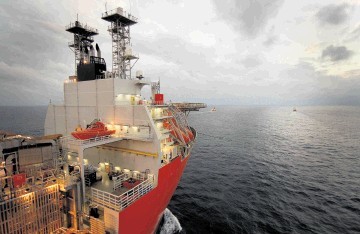
Last year was an exceptional year for the Norwegian upstream oil and gas industry, and more of the same including the opening of new frontiers is expected in 2012, according to Wood Mackenzie.
The year 2011 saw one of world’s largest recent oil discoveries in the mature North Sea, key deals completed, an increase in capital spending and licensing reaching a new high.
The big find that dominated the headlines in 2011 was Avaldsnes/Aldous, now called Johan Sverdrup after a Norwegian politician.
Malcolm Dickson, Norway analyst for Wood Mackenzie’s Europe upstream research team, said: “The reserves estimates for Avaldsnes Aldous range from 1.7 to 3.3billion barrels of oil equivalent, which means the field could be the third-largest Norwegian find of all time.
“It is a unique giant discovery in global terms, as it is in a mature area, which should allow development to proceed quickly.”
In 2011 Norway remained in the top five globally for capital expenditure – the majority of this was spent on large mature developments like Ekofisk and Troll.
New development spending centred on BP’s floating production vessel on the Scarv field, due on stream early this year, and ENI’s Goliat field, also being developed via a floating production vessel and expected onstream in 2013.
Activity is not just centred on development. In 2011, the acreage awarded for exploration offshore Norway was the greatest since 1965.
Mr Dickson said corporate activity was similarly noteworthy. “The total value of commercial upstream assets transferred doubled to $2.3billion in 2011, though the number of transactions remained fairly stable, the character of the deals and the value achieved is remarkable,” he said.
He said two deals stood out – the Avaldsnes/Aldous discovery freed Statoil to make its first material upstream divestment in Norway and agree a $1.6billion deal with Centrica.
State-representative Petoro also made a landmark swap deal with Aberdeen-based Faroe Petroleum.
More positive news is expected in 2012, Wood Mackenzie said.
It expects to see huge upside uncovered by exploration and appraisal wells in Norway, particularly at the Avaldsnes/Aldous and Skrugard discoveries.
Indeed, the year has already started well, it said, with a 250million barrels of oil equivalents discovery on Havis in the Barents, close to Skrugard.
This led Wood Mackenzie to suggest that progress would be made in 2012 towards the formal opening of the East Barents Sea area for exploration, and the eventual opening of the areas around the Lofoten Islands towards the end of the decade.
In fact, following a demarcation line in the Barents Sea being agreed in July 2011, the Norwegian Petroleum Directorate has started mapping the new area with the goal of opening it for new petroleum activity, work it has predicted will be completed this year.